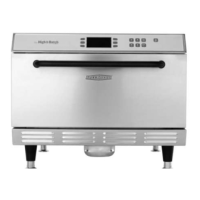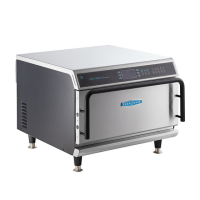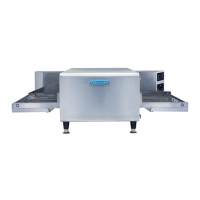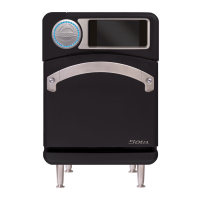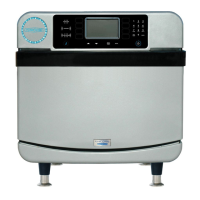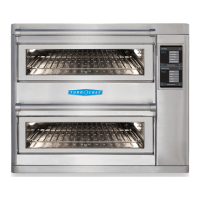EMISSION
TEST:
UL 710B Sec. 59
METHOD
TEST
FOR EVOLUTION OF SMOKE OR GREASE-LADEN AIR
The model HHB2 cooking appliance was placed under a hood overall 48 by
41 by 96 in. with the hood airflow at 500 CFM, and is tested using a method
derived from EPA Method 202. Underwriters Laboratories also provided the
following products for the test, Ore Ida Thick Cut Fries, Chicken Breasts,
Tyson Fire Wings and Ground Beef Patties.
A _12_in. by _6_ in. rectangular, _108_ in. tall sheet metal stack was
constructed on top of the sheet metal hood and mounted above the exhaust vent
of the hood. A sampling port was located approximately 80 in. downstream
from the hood exhaust, at which point it was determined there was laminar
flow. The sampler was assembled and an out of stack filter was used. A
pre-leak check was conducted and determined to be < 0.02 ft/min. Sampling
was determined to be done at 8 traverse points.
The oven was operated normally by cooking the following foods:
One Complete Cycle
FOOD
# of
Cycles
Cook
Time
(min)
Weight of
Product
(oz.)
# of pieces
per cycle
Product Temp
before
cooking
Ore Ida
Thick Cut
Fries
2
6:45
24
24 oz.
Batch
Frozen
Chicken
Breasts
2
6:50
5-6 4 36°F
Tyson Fire
Wings
2
11:00
12 6 Frozen
Ground
Beef
Patties
2
*6:00
6 6 37°F
The cooking cycle was repeated for 8 hours of continuous cooking. This
resulted in _8_ complete cycles.
During the cooking operation, it was noted whether or not visible
effluents evolved from the air exhaust of the hood. Gauge, meter and
temperature readings were taken and recorded every 10 min. After cooking,
the condition of the duct was noted and a post-leak check was conducted and
determined to be < 0.02 ft³/min.
(*) Note: The cook time for the ground beef patties was changed from 5
minutes to 6 minutes due to the burgers not being cooked all the way through.
mac 2012-2-17.
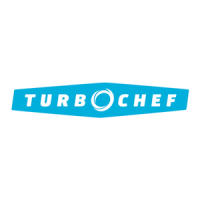
